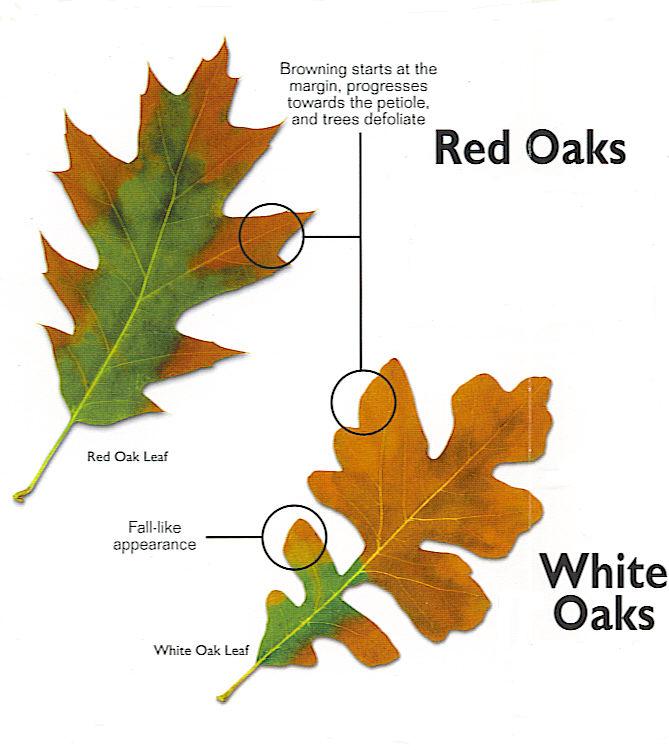by Elsa Johnson
Ok, dear readers, I’m sorry – but this article is about a downer. Oak wilt is a devastating fungal disease affecting oak trees and it is here in Northeast Ohio. Once trees are infected by the fungus there really is nothing one can do to save the tree. The tree must be cut down and disposed of properly so that it does not infect other trees.
The first symptom is leaf margin browning. Also, fungal mats may form under the tree bark and may crack and lift the bark. Trees that show symptoms during the summer are usually dead by the following spring.
Oaks in the Red Oak family (red oak, scarlet oak, black oak, pin oak) (all with pointed lobes) are more susceptible. Oaks in the White Oak family (white oak, swamp white oak, burr oak) (with rounded lobes) are less susceptible – but once they are infected they also die, just more slowly.
This fungal disease is transmitted in two ways. # 1 — Insects, primarily beetles, are attracted to damaged or cut wood and carry the disease from tree to tree. # 2 — The fungus can also be spread via roots. Oak trees growing in proximity to the infected tree can become infected through their interconnected root systems. In situations such as one finds here in our older residential neighborhoods with many large old oak trees, the disease can spread in an ever expanding circle.
Control is challenging and preemptive. When a tree has died due to oak wilt, that infected tree must be removed. The wood can be used for firewood but should be debarked. Or if not debarked it should be stacked and covered and sealed during the warm months (April to October).
Preemptive treatment of healthy oaks is possible through application of a fungicide. However, once a tree shows symptoms, it is too late to do this.
Other things you can do? Avoid compaction under trees. Mulch under trees (preferably out to dripline) – but no ‘volcano’ mulching please (that means no mulch piled up around the base of the tree – that is precisely where the tree does not need it).
Do not prune or have your oak trees pruned during the warm months, roughly April to October.
And — If you suspect you have a tree with oak wilt, have your tree (s) looked at by an ISA Certified Arborist. Help protect one our most vulnerable natural resources – our venerable old oak trees.


Thank you very much for posting this. I’m deeply sorry to hear that this fungal disease is present here in NE Ohio. I’ll talk with our ISA Certified Arborist at Forest City Tree about this disease to learn more, as we have a large old pin oak in our yard and there are a number of others in the surrounding properties. A number have died, including some very large old ones that were comparable to ours, so I am concerned that this might have been the cause of their demise.
Thank you for this information…..
Can this be spread through the leaves of diseased trees? As in mulches, municipal or otherwise?